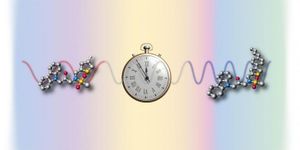Researchers Make a Computer That Moves Matter Instead of Information
When you think about a computer, what do you think of? Is it the little box at your desk with a screen hooked up to it, or is it a tablet, or even a smartphone?
Stanford University wants you to get these stereotypes out of your head. A computer isn't necessarily something that transmits bits of information from one part of a circuit board to another, but rather it's something that can be controlled to perform operations using input and output.
Researchers at Stanford University have created a computer that essentially uses water droplets to handle information. The machine has been part of a huge research project almost 10 years in the making, but an official demonstration of the machine shows that it works well for what it's made for.

So what is it made for? - Manu Prakash, one of the lead researchers behind the project, notes that the machine's purpose is to move matter, and not necessarily information like a traditional computer would.
"We already have digital computers to process information. Our goal is not to compete with electronic computers or to operate word processors on this," explains Prakash."Our goal is to build a completely new class of computers that can precisely control and manipulate physical matter. Imagine if when you run a set of computations that not only information is processed but physical matter is algorithmically manipulated as well. We have just made this possible at the mesoscale."
Using a complex system of magnetized liquid droplets and electrical coils, this computer is able to control the direction of matter on a small surface made up of magnetic T and I shaped pathways using essentially a big magnetic field.
You can see how the machine works in the video below by Stanford University:
The handling of physical matter is significantly slower than handling electrical signals like traditional computers do, but the researchers are not trying to replace the modern computer. Instead, the idea is to get matter moving around using logical magnetic signals that could one way make it quicker and easier to move actual things.
Even more interesting is that the researchers say they can convert any type of logic handled by a regular computer and they can apply it to their matter-moving computer such that it does the same thing.
"Following these rules, we've demonstrated that we can make all the universal logic gates used in electronics, simply by changing the layout of the bars on the chip," says Georgios Katsikis, another of the researchers behind the project. "The actual design space in our platform is incredibly rich. Give us any Boolean logic circuit in the world, and we can build it with these little magnetic droplets moving around."
This new computer system is very interesting, but is still far from any practical use. But in the future, possibilities are endless.
Source: Stanford University News








